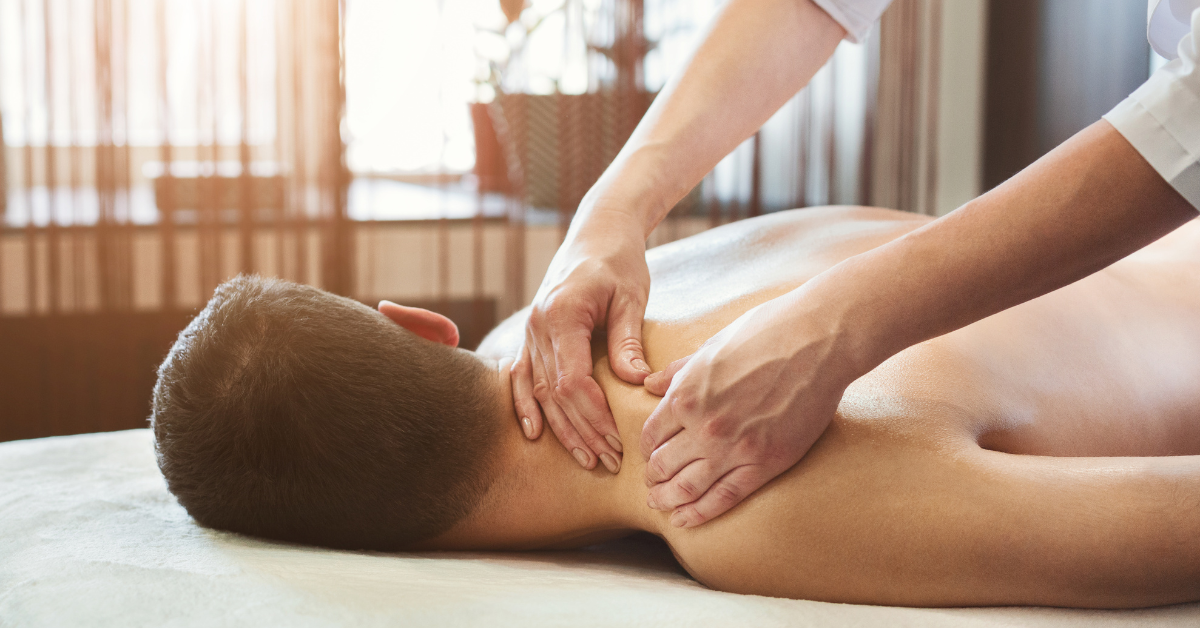30 seconds summary
- Combining cannabis with sports massage therapy creates a powerful synergy for mind and body wellness. CBD and THC can reduce pain, inflammation, and anxiety, while massage boosts circulation, flexibility, and muscle recovery.
- When used together, especially by a knowledgeable sports massage therapist.
- These therapies enhance relaxation, accelerate healing, and support peak physical performance without relying on pharmaceuticals.
Introduction
In the ever-evolving landscape of wellness and integrative health, the confluence of cannabis and sports massage therapy represents a bold yet increasingly validated frontier. These two modalities, rooted in both ancient practices and modern science, are finding synergy in addressing not just physical ailments but also the mind-body balance that defines true wellness.
Athletes, fitness enthusiasts, and wellness seekers alike are beginning to harness the potential of cannabis-infused sports massage therapies to enhance performance, speed recovery, reduce pain, and foster mental clarity. As the stigma surrounding cannabis use dissipates and clinical interest expands, it becomes vital to understand how cannabis, particularly cannabinoids like CBD and THC, interacts with the physiological benefits of sports massage.
This article delves deep into the intersection between these powerful healing approaches, investigating mechanisms, benefits, safety, and the growing role of the sports massage therapist in integrating cannabis therapeutics into holistic bodywork.
Understanding Cannabis: From Stigma to Therapeutic Power
The Endocannabinoid System (ECS)
Cannabis’ healing potential lies in its interaction with the endocannabinoid system (ECS)—a complex cell-signaling system that plays a critical role in regulating functions such as mood, pain, appetite, inflammation, and immune responses. The ECS is present throughout the body and interacts with cannabinoids like:
- CBD (Cannabidiol) – Non-intoxicating and known for anti-inflammatory, anxiolytic, and neuroprotective effects.
- THC (Tetrahydrocannabinol) – Psychoactive but also a potent analgesic and muscle relaxant.
When administered topically or through systemic routes, cannabinoids can influence pain signaling, muscle tone, and mental state—all of which are integral to sports recovery and performance.
Shifting Perceptions and Legal Landscape
What was once a taboo subject is now at the heart of medical and recreational discourse. With increasing legalization across jurisdictions, cannabis is being re-evaluated through the lens of evidence-based care. Athletes from MMA fighters to marathoners are publicly endorsing its benefits, not for performance enhancement per se, but for recovery and resilience.
What Is Sports Massage Therapy?
Sports massage therapy is a specialized form of bodywork aimed at improving athletic performance and promoting recovery. Its techniques are designed to:
- Enhance circulation
- Reduce muscular tension
- Break down adhesions (knots)
- Improve range of motion
- Prevent injuries
- Aid psychological readiness
The sports massage therapist typically adapts the treatment according to the training phase—pre-event, post-event, maintenance, or rehabilitative care. It is both corrective and preventive, making it a staple in elite and recreational athletic circles.
The Synergy: Cannabis and Sports Massage Therapy
1. Enhanced Pain Relief
Cannabis-infused massage oils and balms often contain CBD, which is known to modulate pain pathways without systemic side effects. When combined with the mechanical pressure of sports massage:
- CBD interacts with TRPV1 receptors, helping to desensitize pain signaling.
- THC, when included, adds muscle-relaxing properties by targeting CB1 receptors in peripheral tissues.
The net effect is often a more profound and sustained relief from DOMS (Delayed Onset Muscle Soreness), chronic injuries, and joint discomfort.
2. Anti-Inflammatory Benefits
Massage itself reduces inflammation by promoting lymphatic drainage and circulation. Cannabinoids enhance this process:
- CBD inhibits pro-inflammatory cytokines, complementing massage’s mechanical effects.
- This dual-action approach is particularly beneficial in treating overuse injuries and tendonitis.
3. Mental Relaxation and Nervous System Reset
The mind-body aspect of recovery is often underappreciated. Cannabis, particularly in microdoses or topical applications, can:
- Reduce cortisol levels
- Alleviate anxiety
- Promote parasympathetic dominance (rest-and-digest mode)
This aligns perfectly with massage’s calming effects on the nervous system. Athletes report improved sleep quality and a sense of “mental reboot” after cannabis-infused bodywork.
4. Muscle Recovery and Tissue Healing
The synergy also facilitates muscle regeneration. Sports massage promotes oxygenation and nutrient flow to tissues, while CBD’s antioxidant properties help reduce oxidative stress and support mitochondrial function in muscle cells.
This combo may potentially shorten recovery windows between high-intensity training sessions.
Role of the Sports Massage Therapist in Cannabis Integration
Sports massage therapists play a pivotal role in the safe and effective integration of cannabis into bodywork. This includes:
1. Product Knowledge and Application Techniques
Therapists must understand:
- Concentration and type of cannabinoid (CBD isolate, full-spectrum, THC content)
- Carrier oils and their absorption rates
- Skin sensitivity risks
- Dosing guidelines and state regulations
Application areas like joints, trigger points, and large muscle groups can yield different outcomes depending on the product and technique used.
2. Client Assessment and Communication
Not all clients are suitable candidates for cannabis-infused therapies. The therapist’s responsibilities include:
- Evaluating medical history
- Discussing consent and expectations
- Explaining psychoactive vs. non-psychoactive options
- Monitoring for adverse reactions
Clear communication helps build trust and ensures compliance with ethical standards.
3. Collaboration with Other Healthcare Providers
Sports massage therapists often work alongside chiropractors, physical therapists, and coaches. In cannabis-integrated care, collaboration ensures:
- Non-conflicting interventions
- Holistic wellness tracking
- Legal and clinical alignment
Science-Backed Evidence: What the Research Says
- A 2020 review in Frontiers in Neurology noted that CBD significantly reduced pain and inflammation in athletes without adverse effects, suggesting potential for therapeutic massage integration.
- Studies in the Journal of Clinical Psychology have shown cannabis topicals reduce localized pain from conditions such as arthritis and neuropathy, indirectly improving mobility.
- Anecdotal case studies from sports medicine clinics report reduced dependence on NSAIDs and opioids when athletes adopted cannabis-assisted recovery protocols.
However, more double-blind trials are needed, especially with topicals and varying massage durations.
Cannabis Forms in Sports Massage
- Topicals (CBD creams, balms, salves):
- Localized effect
- No psychoactivity
- Easy integration
- Transdermal patches:
- Slow-release cannabinoids
- Useful for extended muscle support
- Aromatherapy oils (hemp-based terpenes):
- Indirect ECS activation
- Synergistic with deep tissue work
Legal and Ethical Considerations
1. Regional Legislation
In places where cannabis is not fully legalized, therapists must ensure that:
- Only hemp-derived CBD (<0.3% THC) is used
- Products are third-party lab tested.
- Clear disclaimers and consent forms are signed
2. Professional Liability
Some states require massage therapists to hold additional licenses if incorporating cannabis. Liability insurance providers may also require disclosure and approval.
Case Studies and Athlete Testimonials
Case 1: Ultra-Endurance Athlete
An ultra-marathon runner incorporated weekly cannabis-infused sports massages during peak training. Reported benefits included:
- Reduced inflammation in knees and ankles
- Better sleep
- Fewer missed workouts due to fatigue
Case 2: MMA Fighter
An MMA professional used CBD salves pre- and post-fight with deep tissue massage. Noted:
- Faster bruise healing
- Increased mental relaxation before bouts
- Less reliance on muscle relaxants
Therapist Testimonial
“I’ve worked with athletes who were initially skeptical but are now regular clients for CBD-infused sports massage. It’s not about getting high—it’s about getting better,” says a licensed sports massage therapist from Los Angeles.
Potential Risks and Contraindications
- Allergic reactions: Essential oils or cannabis extracts may irritate sensitive skin.
- Drug interactions: CBD can interfere with liver enzymes metabolizing certain medications.
- Placebo effect: While valid, outcomes may vary greatly from person to person.
- Product variability: Not all products are high quality; mislabeling can be a risk.
Therapists and clients must approach this integration with informed caution and proper vetting of products.
Future Outlook
The cannabis-wellness industry is projected to surpass $20 billion by 2030. As clinical research expands and more athletes endorse it, cannabis in sports massage may soon move from niche to mainstream. Future developments may include:
- Smart topicals with controlled cannabinoid release
- AI-assisted massage protocols integrating ECS data
- Cross-disciplinary training for therapists in cannabis pharmacology
Regulatory frameworks will likely evolve, standardizing dosage, application techniques, and safety practices.
Conclusion
Cannabis and sports massage therapy, when combined, offer a multi-dimensional approach to healing and performance optimization. From pain relief and inflammation control to nervous system reset and tissue repair, their synergy supports a holistic path to well-being.
Yet, this integration demands professional expertise, legal awareness, and individualized client care. The sports massage therapist emerges as a key figure in guiding safe and effective cannabis use, ushering in a new era of personalized, plant-enhanced recovery strategies.
By understanding both the science and subtlety of this union, we open the door to a more balanced, empowered, and high-performing life for body and mind alike.

